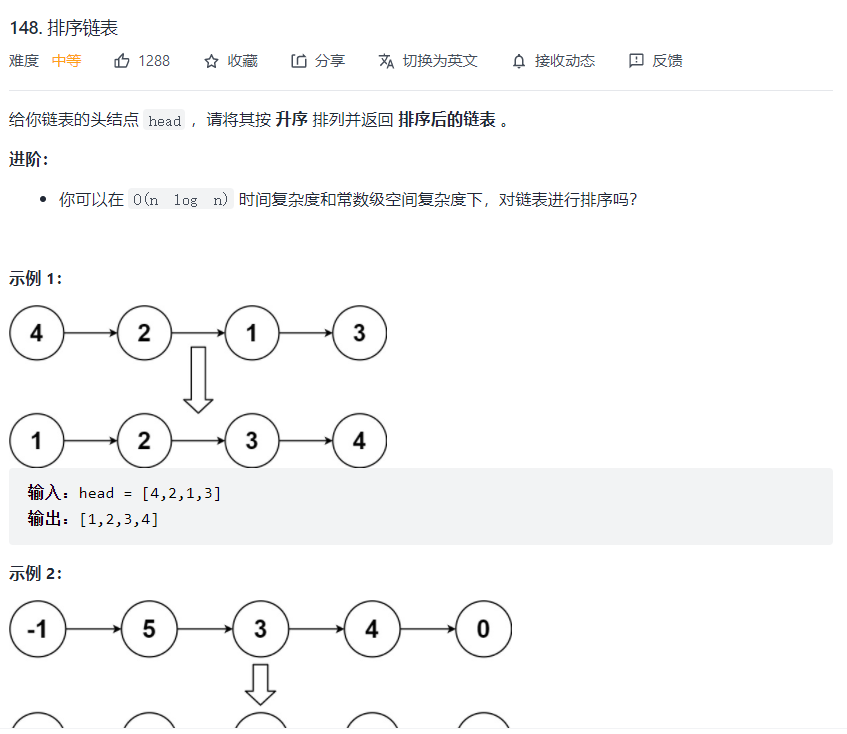
### 解题思路 此处撰写解题思路 ### 代码 ```cpp /** * Definition for singly-linked list. * struct ListNode { * int val; * ListNode *next; * ListNode() : val(0), next(nullptr) {} * ListNode(int x) : val(x), next(nullptr) {} * ListNode(int x, ListNode *next) : val(x), next(next) {} * }; */ class Solution { public: ListNode* sortList(ListNode* head) { return sort_list(head, nullptr); } //排序指定区间段内的链表,左闭右开 ListNode* sort_list(ListNode* head,ListNode* tail) { //空链表 if(head==nullptr) { return head; } //右边边界不取,所以限定条件是==tail 如果等于了就说明只有一个元素 if(head->next==tail) { //head后面就没了,断开和后面之前的那些联系,因为他就只有一个节点 head->next=nullptr; return head; } ListNode* fast=head; ListNode* slow=head; //快慢指针 快走到头慢就是中点 while(fast!=tail) { fast=fast->next; slow=slow->next; //fast是否到达有边界 if(fast!=tail) { fast=fast->next; } } ListNode* mid=slow; //归并两边 [head,mid)和[mid,null) return merge(sort_list(head,mid),sort_list(mid,tail)); } ListNode* merge(ListNode* l1,ListNode* l2) { ListNode* start=new ListNode(); ListNode* keep=new ListNode(); //决定头 当然也可以弄个假头就不用这么判断了 if(l1->val<l2->val) { start->val=l1->val; l1=l1->next; keep=start; } else{ start->val=l2->val; l2=l2->next; keep=start; } while(l1!=nullptr && l2!=nullptr) { if(l1->val<l2->val) { ListNode* newnode=new ListNode(l1->val); start->next=newnode; start=newnode; l1=l1->next; } else{ ListNode* newnode=new ListNode(l2->val); start->next=newnode; start=newnode; l2=l2->next; } } if(l1!=nullptr) { start->next=l1; } if(l2!=nullptr) { start->next=l2; } return keep; } }; /* //插入 //新链表的头 赋一个最小值 ListNode* nohead=new ListNode(-INT_MAX); //index遍历原始链表 ListNode* index=head; while(index!=NULL) { ListNode* index1=nohead; //记录遍历新链表时的前一个节点 因为插入要在前一个的后面插入 ListNode* pre=nohead; while(index1!=NULL) { if(index->val>index1->val) { //当前要排序的值比新链表的值大,那么新链表继续往后看,因为大的要往后插 pre=index1; index1=index1->next; } else{ //找到插入的位置了就插入 ListNode* newnode=new ListNode(index->val); pre->next=newnode; newnode->next=index1; break;//跳出去 } } if(index1==NULL)//到新链表的结尾了没找到比他大的 插在最后 { ListNode* newnode1=new ListNode(index->val); pre->next=newnode1; } index=index->next; //切记切记,不然又死循环了。。总忘记 } return nohead->next;//假头后面的就是真实的第一个了 */ ```
每天进步一点点~



